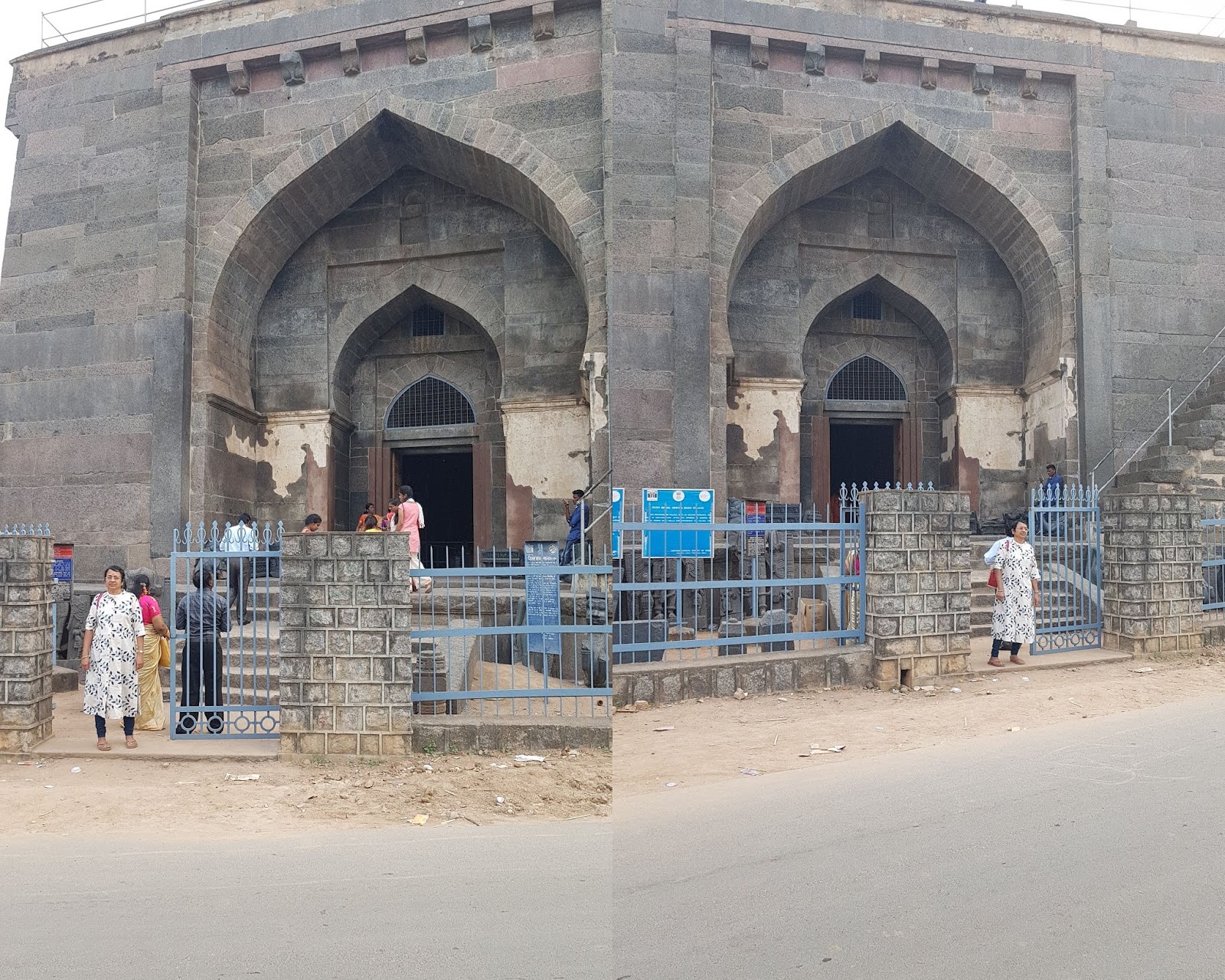Warangal
Fort - Marvelous Architectural Masterpieces - A Video:
I have been
to Warangal a number of times but could not visit Warangal Fort, though I was
aware of its greatness. The main reason is that my visits to Warangal have been
of very short duration and during these trips,
I could visit only Bhadrakali Temple and 1000 Pillar Temple.
Better late
than never, I have finally visited Warangal Fort along with my wife very
recently and we are thrilled, fascinated and happy with the visit.
I hope the
following write-up, attached photographs and the video will convey to you the greatness
of this Fort and the awesome sculptural and architectural beauty that we could
witness here, though much of it is in ruins now.
Warangal
Fort was built in the 13th century by the Kings of Kakatiya Dynasty. It was constructed
by King Ganapatideva and later by his daughter Rani Rudrama. Warangal Fort is
symbolic of the historical opulence of the region during the reign of Kakatiya
Kingdom. It was built as King Ganapatideva shifted the capital of the Kakatiya
kingdom from Hanamkonda to Warangal. This Fort stands 12 km away from
Hanamkonda. After Ganapatideva, his daughter Rani Rudrama, who took over the
Kakatiya reign, looked after the completion of this Fort. Later King Prataparudra
II who was also known as Rudradeva II, the last ruler of Kakatiya Kingdom, also
made a considerable addition to Warangal
Fort.
The Fort is
located on the southeastern side of Warangal city. It is a prominent landmark of
Telangana State, presenting a perfect example of architectural excellence and
historical richness. Built in three layers of fortification ensuring absolute
safety, Warangal Fort impresses every visitor with its imposing structure.
Although now in ruins, the remains of the Fort still present a glimpse of the
mesmerizing craftsmanship and breathtaking artistry that can be seen in the
motifs, sculptures, stonework, etc.
Warangal Fort has witnessed many battles and destruction
and several parts of it have been deliberately
destroyed by various anti-Hindu invaders.
A visit to
Warangal Fort is sure to leave you fascinated with the gracefulness of its
architecture and brilliance though it is mostly in ruins. The remains of the Fort
have been recognized as monuments of national importance by the Archaeological Survey of India, which is now taking care of
the site.
This Fort
withstood many attacks, which led to the destruction
of its various parts. In 1309, Malik Kafur who was the general of Alauddin
Khilji had launched an attack on the Fort. An army consisting of around 100,000
men attacked the Fort in a battle that lasted for many months. The Fort was
then defended by King Prataparudra II and his army. Later, many times, Warangal Fort was attacked by the
Sultans of Delhi as well.
Eventually, the Qutub Shahi Dynasty took the control of this Fort, later it
was under the rule of Hyderabad Nizams.
No
discussion about Warangal Fort is complete without mention of its structural beauty.
Warangal Fort presents glorious architecture. The Fort consisted of around 45
towers/pillars built over a diameter of about 12.5 km.
However, today
only the central part of the Fort which has been recognized as an
Archaeological Zone is there for us to see in detail. This area of Warangal Fort has four Ornamental
Gates which originally formed the gates to the destroyed great Shiva Temple
within. These four Main Gates are impressively carved into 30 feet high -
massive pillared arches built out of single rock. These Gates are known as
Kakatiya Kala Thoranams or Warangal Gates. The architectural feature of these
historical arches of the Warangal Fort has been adopted as the symbol of the
Kakatiya Dynasty and has been officially incorporated as the Emblem of
Telangana State. Most of the Warangal Fort photos present a glimpse of this
section of the Fort. Here you can see the ruins of Shiva Temple. You can also
see wall slabs, entrance pillars, ceiling panels, a relic of the mihrab, many
small shrines, etc. The main deity of the temple, Shiva Lingam with four faces
of Lord Shiva has been kept in a shrine towards the southern complex of the Fort.
Regular prayers are offered to the Lord at the new shrine. Within the Fort
complex, one can also find ponds and various small temples. These remains offer
an insight into the Fort structure and of the Kakatiya era. Inscriptions on the
pillars and the walls also speak about the period during the reign of Kakatiya
Kings.
Warangal
Fort and the huge arches – Kakatiya Kala Thoranams are included in the "Tentative
List" of UNESCO World Heritage Site.
At a
distance of 490 feet from the Archaeological Zone is the Kush Mahal, which is a
Public Hall built in the 14th century by the Delhi Sultans, who had captured
the Fort. The Mahal, which is rectangular in shape, is built with huge sloping
walls, sliced by six arched openings on each of its sides. There was once a
timber roof over this Mahal, supported by five transverse arches built of
stones. There are approach steps on the northeast corner that provide access to
the top of the structure, which has scenic views of the entire Fort Complex.
Attached
are pictures and video of the ‘Fort - Archeological Zone’ and the adjacent ‘Kush
Mahal’.
I have also
provided pictures of the “Introduction Sign Boards” placed at these Sites for
further information.





































ReplyDeleteIncredible place! What a colorful story ....